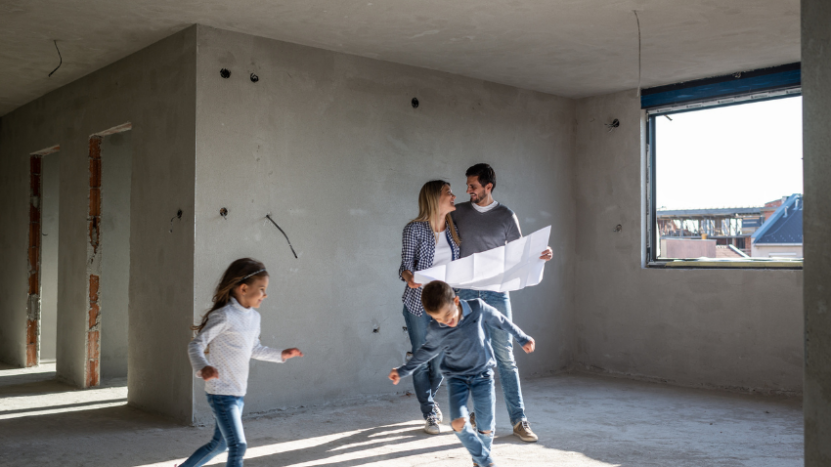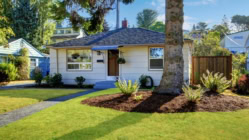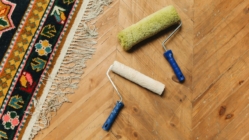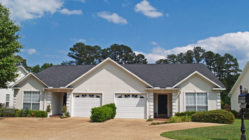
The FHA 203(k) loan, often referred to as the 203(k) rehab loan, is a mortgage program designed to help homebuyers purchase a property in need of repairs or renovations. This loan option allows you to borrow funds not only for the purchase price but also for the cost of improvements. Let’s dive into the details of FHA 203(k) mortgage financing, its requirements, and the benefits it offers.
What is a FHA 203(k) Loan?
A FHA 203(k)loan is an FHA-backed mortgage that enables homebuyers to finance both the purchase of a property and the cost of repairs or renovations. It is an all-in-one loan, providing a single mortgage for the purchase and improvement expenses. This renovation loan program is an attractive option for homebuyers looking to invest in properties that require substantial updates.
FHA 203(k) Loan Requirements
To qualify for an FHA 203(k) loan, you’ll need to meet certain requirements. Here are the key criteria to keep in mind:
- Property Eligibility: The property must be a one-to-four-unit dwelling that has been completed for at least one year. It can be a single-family home, a townhouse, or a condominium. However, the property cannot be a co-operative or an investment property.
- Credit Score: While there is no specific minimum credit score required for an FHA 203(k) loan, most lenders prefer a credit score of at least 620. A higher credit score will increase your chances of approval and potentially qualify you for better interest rates.
- Down Payment: The down payment requirements for a FHA 203(k) loan are the same as those for a typical FHA loan. Generally, a minimum down payment of 3.5% of the total loan amount is required.
- Debt-to-Income Ratio: Lenders will assess your debt-to-income ratio to determine your ability to repay the loan. In most cases, the total mortgage payment (including principal, interest, taxes, and insurance) should not exceed 31% of your gross monthly income, and your total monthly debt obligations should not exceed 43% of your gross monthly income.
- Project Scope and Contractor: You’ll need to provide detailed plans, estimates, and specifications for the proposed renovation project. Additionally, you’ll be required to work with a licensed contractor to carry out the repairs or improvements.
Frequently Asked Questions on FHA 203(k) Mortgage Financing
Q1: Can I use a FHA 203(k) loan to refinance my existing home?
Yes, FHA 203(k)loans are specifically designed for purchasing or refinancing properties that require repairs or renovations. However, if you’re looking to refinance an existing mortgage that does not need repairs or renovations, you may consider other FHA refinancing options available.
With Rate Watch, we’ll notify you via email when rates drop below your current rate.Get notified when rates drop!
Q2: Are there limits on the loan amount for FHA 203(k)loans?
Yes, FHA 203(k) loan limits vary by county and are based on the median home price in that area. It’s important to check the loan limits in your county to ensure your desired property falls within the approved range.
Q3: What types of repairs or renovations are eligible under the FHA 203(k) program?
The FHA 203(k) program allows for a wide range of repairs and improvements. This includes structural alterations, room additions, accessibility enhancements, energy-efficient upgrades, plumbing and electrical repairs, flooring, roofing, and more. However, luxury improvements that are not considered necessary for the property’s functionality are generally not eligible.
Q4: How are funds disbursed for the renovation project?
Funds for the renovation project are typically held in an escrow account and released in increments as the work progresses. This ensures that the contractor is paid for completed work and helps protect both the borrower and the lender.
Benefits of FHA 203(k) Mortgage Financing
- One Loan, One Closing: With a FHA 203(k) loan, you can streamline the process by obtaining financing for both the purchase and renovation costs in a single loan. This eliminates the need for separate loans or lines of credit, simplifying the financial aspects of your project.
- Lower Down Payment: FHA loans, including the 203(k) loan, offer a lower down payment requirement compared to conventional loans. This can be especially helpful for buyers who may not have a large amount of cash on hand.
- Flexible Credit Requirements: FHA loans are known for their more lenient credit requirements compared to conventional loans. This can be beneficial if you have a lower credit score or a limited credit history.
- Opportunity for Equity Building: By investing in a property that requires repairs or renovations, you have the opportunity to increase its value over time. This can potentially result in built-in equity once the improvements are completed.
- Revitalizing Neighborhoods: The FHA 203(k) loan program contributes to the revitalization of communities by facilitating the purchase and improvement of distressed properties. By rehabilitating these homes, you not only enhance your living space but also contribute to the overall improvement of the neighborhood.
View mortgage rates for
April 18, 2024
Exploring the 203(k) Loan Process
Once you have decided to pursue FHA 203(k) mortgage financing, it’s essential to understand the process involved. Let’s walk through the key steps to give you a clear picture:
- Identify a Property: Begin by identifying a property that you’re interested in purchasing and renovating. Work closely with your real estate agent to find potential properties that meet your criteria and have renovation potential.
- Consult with Lenders: Reach out to FHA-approved lenders who specialize in 203(k) loans to discuss your financial situation and obtain pre-approval. They will guide you through the loan application process and provide insight into the loan amount you may qualify for.
- Develop a Renovation Plan: With the help of a licensed contractor, develop a comprehensive renovation plan. This plan should include detailed cost estimates for the repairs and improvements you wish to make. Be sure to account for necessary permits and any specific requirements from the lender.
- Submit the Loan Application: Complete the loan application process, providing all necessary documentation, such as income verification, credit history, and details about the property. The lender will review your application and verify the information provided.
- Appraisal and Underwriting: Once your application is approved, an appraiser will assess the value of the property in its current state and its potential value after the renovations. The lender will then conduct underwriting to finalize the loan terms, including interest rates and closing costs.
- Loan Closing: Upon approval, you’ll proceed to the loan closing stage. During the closing, you’ll sign the necessary paperwork, including the loan agreement and renovation agreements. The loan funds will be disbursed to cover the purchase price and set aside in an escrow account for the renovation work.
- Renovation Phase: After the loan closing, you can begin the renovation process. Work closely with your contractor to ensure the project stays on track and meets the agreed-upon specifications. The funds will be released in stages as the work progresses, with inspections to verify completion and quality.
- Completion and Final Disbursement: Once the renovations are complete, a final inspection will be conducted to ensure all work meets the required standards. The lender will then release the remaining funds from the escrow account to pay the contractor. At this point, your dream home has become a reality!
Remember, throughout the process, it’s essential to communicate effectively with your lender, contractor, and other parties involved. Stay organized, ask questions, and stay updated on the progress of your renovation project.
Conclusion
FHA 203(k) mortgage financing provides a unique opportunity for homebuyers to purchase properties in need of repairs or renovations. With this loan option, you can combine the costs of the property and improvements into a single mortgage. By understanding the requirements, benefits, and loan process, you can confidently navigate the journey of transforming a fixer-upper into your dream home.
Ready to get started? Contact JVM Lending today for more information to be better prepared for your homebuying journey!
























